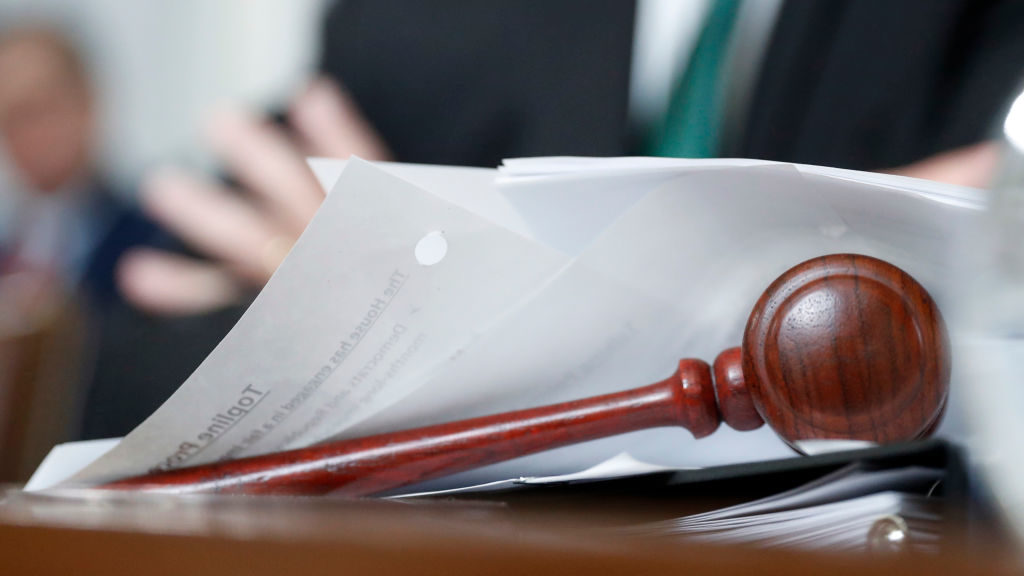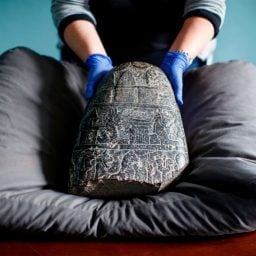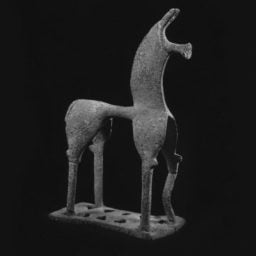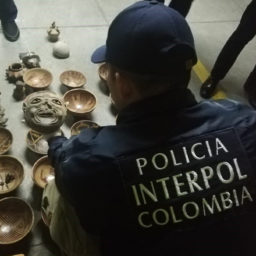When the entire German art and antiques trade is at stake, it is important to get the facts right.
A recent study into the illicit trade of antiquities has recommended that the German government clamp down even harder on the beleaguered German art market. But shockingly, the study’s conclusions are based more on suspicion and prejudice than scientific research.
Amid concern that Germany was a hub for international cultural property crimes, the country’s Federal Ministry of Research began the ILLICID study in April 2015. The €1.2 million project was carried out over three years. The resulting 50-page report, published last month, identified no trafficked items or any evidence whatsoever that the sale of antiquities helped finance terrorism.
But, I would argue, the German ministry that commissioned it has manipulated the results to support an anti-trade agenda. As the secretary general of CINOA, the largest trade federation for art and antiques dealers, who has been campaigning on their behalf in the European Union and elsewhere for years, I have seen firsthand how statistics can be manipulated to suit political agendas and are often accepted without being checked.
Not a Multi-Billion-Dollar Business
Before we get into the specific flaws of the report, it is important to acknowledge that even its motivation is built on a false premise. Over the years, there have been repeated claims from officials that the illicit trade in antiquities is a multi-billion-dollar industry. But after much debate, trade and anti-trade campaigners alike have concluded that these estimates are not only unfounded, but clearly wrong, and part of the trend now dubbed “zombie statistics”—that is, pieces of information that are frequently cited by experts and institutions, despite having no basis in research or reality.
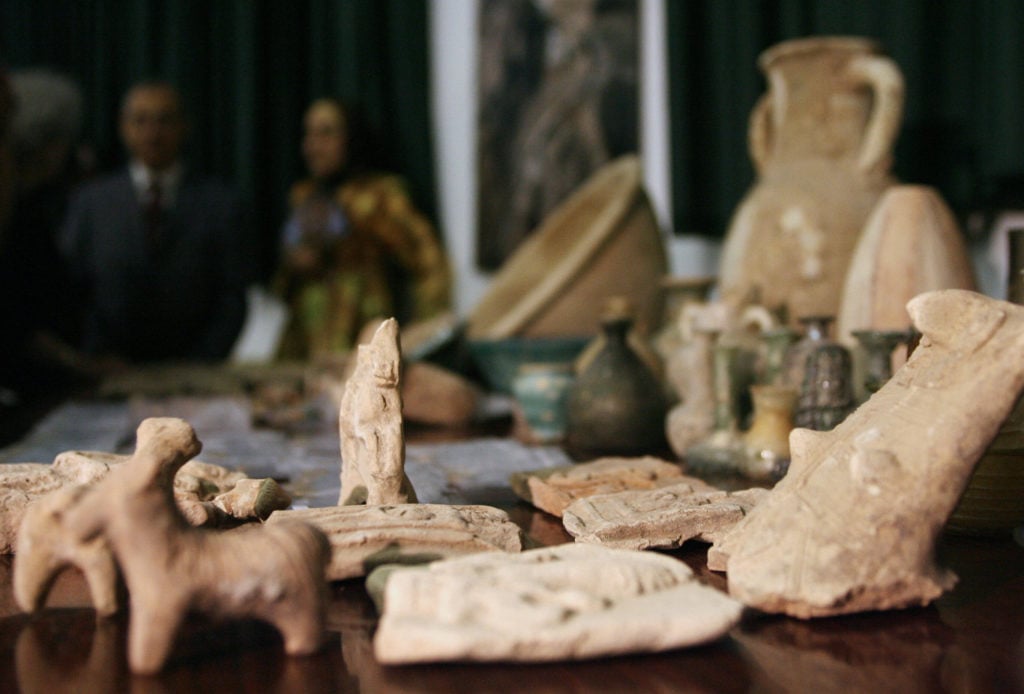
Artefacts looted from Baghdad museum after the US-led invasion of 2003. Photo by AWAD AWAD/AFP/Getty Images.
There have been various attempts to trace where this mistaken belief about the value of the illicit trade in antiquities originated, and sources invariably lead back to several media reports from the early ’90s that cited it as a “belief” held by some experts—but gave no evidence to support that belief.
The authors of the ILLICID report weren’t the only ones taken in by faulty reasoning, which leads to faulty counting. The international criminal police organization, Interpol, removed similar claims from its website just last year, acknowledging the lack of evidence to support them—but not before they had informed some European policies.
So what numbers can we count on? The FBI valued all cultural property crime at around $4 billion in 2013, including crimes relating to everything from contemporary art to antique furniture. This figure was largely made up of domestic burglary and crimes such as fraud and vandalism.
The most reliable figures relating specifically to illicit trade currently available come from the World Customs Organization, whose latest Illicit Trade Report, published in December 2019 and covering 2018, stated that cultural property (including all art and antiques, not just antiquities) accounted for 0.08 percent of trafficking seizures reported through its network. In 2018, a total of 314 trafficked archaeological items were seized globally and reported via the network, down from 703 in 2017.
Unrealizable Provenance Requirements
The ILLICID report examined more than 300,000 items and valued the objects it studied (note: not illegal objects, but all objects) in Germany at around €850,000 per year for the course of the study. A lack of access to criminal evidence means that the report does not even mention illegal excavations, looting, or terrorist financing.
The authors identified a total of four suspicious transactions, but concluded that “potential money-laundering cannot be excluded, however neither is it inevitable.” In one of these cases, it appears that the object in question was a “sleeper,” as in, a misattributed masterpiece whose true significance was simply not recognized by the German auction house that catalogued it.
But perhaps the most sensational figure, widely repeated in media headlines, was that around 98 percent of Eastern Mediterranean antiquities sold in Germany were of questionable origin. This, however, is a skewed interpretation of the facts.
Fewer than two percent of the items studied—a total of 6,133 objects—“potentially” came from regions of interest around the Middle East, and it was 98 percent of that slice deemed to be of questionable origin. So the conclusion might be more accurately framed as: just under 0.02 percent of all of the items studied are of “questionable origin.”
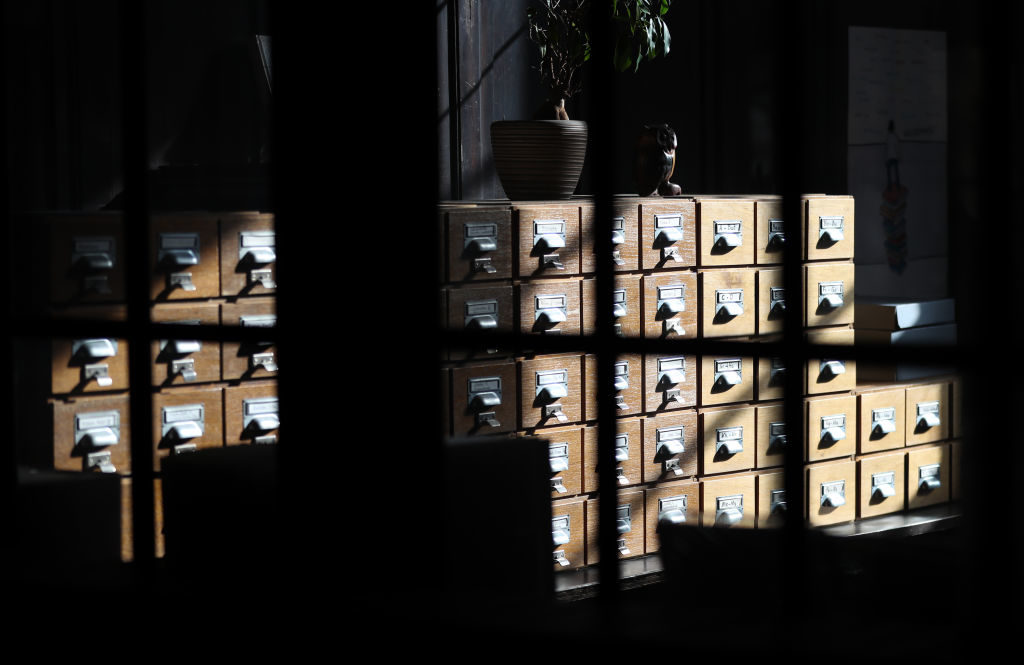
Filing cabinets. Photo by Jan Woitas/picture alliance via Getty Images.
The suspicion about origin is largely based on what the researchers see as incomplete provenance history, including the absence of previous owners’ names, despite the fact that data protection rules prevent this in many cases. The absence of full documentation for antiquities that have been circulating in the market for years is not only commonplace, but the norm.
Countries of origin often had no export licensing system when items were exported originally and, even where they did, detailed invoices were rarely required. Family heirlooms often do not come with paperwork that pinpoints their trade histories. None of these scenarios gives rise to suspicion of crime, yet the ILLICID report—and the ministry recommendations arising from it—act as though it does.
A German law introduced to protect cultural assets, passed in August 2016, ignores these reasonable factors and instead demands proof of legal export from a country of origin before it will allow import. But this is impossible in the majority of cases. Believe me—dealers would love to have an unbroken provenance for everything they sell. It would not only make their lives much easier, but would also add to the value of what they trade in.
If ILLICID deems such objects as failing to meet the requirements of the law, then it simply shows how misguided that law is and how little those in power understand the market or even care to do so. In the end, absence of evidence is not proof of guilt.
Even with all of this, ILLICID notes that only 10.9 percent of the objects it studied lacked any provenance at all. The remaining 87 percent have information, but the study does not consider it sufficient.
No Terrorist Financing
This is not the study’s only flaw. There is also a lack of evidence to support its claim that antiquities sales significantly finance terrorism and, principally, the activities of IS. The recommendations offered assume that IS control of any given region, and the increasing vulnerability of cultural heritage amid the political instability, means that it financed itself significantly through the looting of antiquities.

An Iraqi soldier stands on November 15, 2016, on the ruins of the archaeological site of Nimrud, which were severely damaged by ISIS. Photo courtesy SAFIN HAMED/AFP/Getty Images.
But the UN Security Council’s monitoring team reported in 2019 that the IS had not systematically used cultural assets as a source of funding. A 2017 study by Deloitte ordered by the EU Commission to justify stringent new import licensing regulations found that none of the 28 EU member states could identify the financing of terrorism through cultural property at all. King’s College, London concluded its research in the same year with the view that financing terrorism via the antiquities trade is unlikely.
Grasping at straws for evidence to back its recommendations, the ministry called on a 2005 article in the German magazine Der Spiegel that claimed the lead terrorist in the 9/11 attacks financed the operation by selling looted Afghan artifacts. But in reality, while Mohamed Atta had asked a professor where such pieces might be marketed, and was referred to Sotheby’s, nothing ever came of this.
A Suffocating Bureaucracy
It is quite frankly scandalous that despite the failure of the ILLICID study back up its initial assumptions with hard evidence, the Federal Ministry of Research appears now to have manipulated the results to pursue its original agenda.
I am shocked by the recommendations for numerous measures to be taken against a market already brought to its knees by earlier misconceived legislation, which itself was imposed as a result of political ideology rather than to solve a proven problem.
This time, the recommendations include a transparency register in which all archaeological cultural assets that can be legally traded must be recorded. But this inflicts more work on dealers while failing to acknowledge the impossibility of the task. If accepted, the recommendations will also mean yet another database being set up for known or allegedly counterfeit cultural goods. It also recommends digitizing all trade publications after 1945, but fails to provide any budget by which already struggling dealers could do so.
The list of regulations already in place or proposed covers every eventuality already. These include—but are not limited to—the new EU import licensing laws, which also cover export licenses from source countries; UN sanctions specifically targeted at Syria and Iraq; and, perhaps most importantly, the EU’s fifth anti-money laundering directive, which explicitly targets the art market and comes into full force at the beginning of 2021, with severe penalties for those who break the rules.
Germany has little more than a handful of antiquities dealers these days, and most are micro-businesses. How are they going to cope if this latest set of ridiculous measures is adopted? And what are the implications for the rest of the market? It is a suffocating bureaucracy that is undermining an already vulnerable trade.
Erika Bochereau is the Secretary General of the Confédération Internationale des Négociants en Œuvres d’Art (CINOA), a trade organization for art and antiques dealers.
